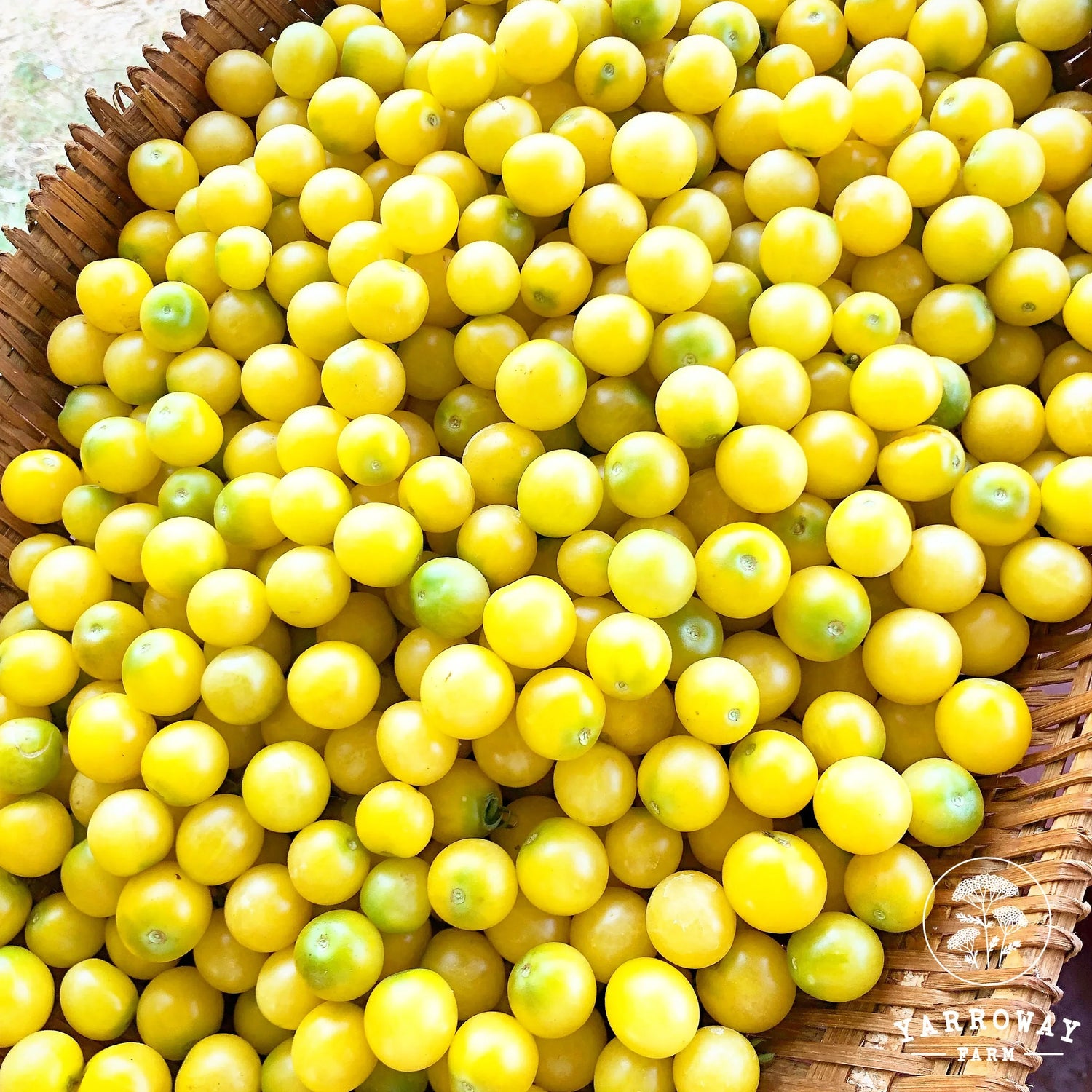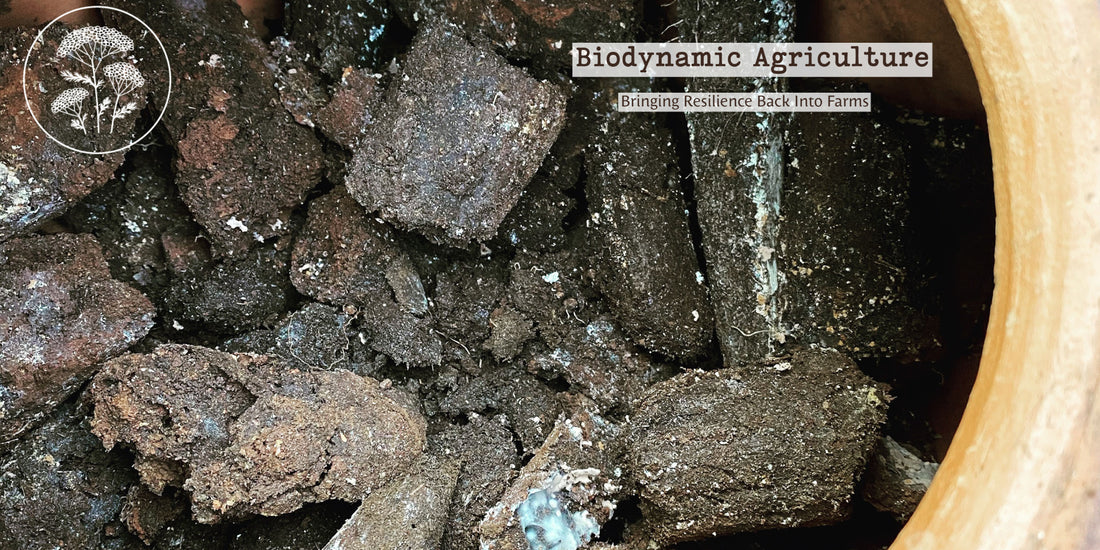For Agriculture World Magazine, India. Published: September 2019
HOW IT STARTED The idea of Biodynamic Agriculture began in the 1920’s and
was modelled around the agricultural lectures given by
Austrian born scientist and philosopher Rudolph Steiner.
He is also the father of Anthroposophy and the Waldorf
education system. Today biodynamic agriculture is practiced
on farms around the world, on various scales, and in variety
of climates and cultures. Most biodynamic farms are located
in Europe, the United States, Australia and New Zealand.
Peter Proctor, a biodynamic farmer from New Zealand
introduced biodynamic farming across major farms in India
in the early 1990s. In 1924, Steiner delivered a series of eight lectures on
organic agriculture practices to a group of farmers from
Germany and Poland. The farmers approached Steiner because
they were worried about the future of agriculture, and
requested him to help with their issue of degraded soil
conditions and deterioration in the health and quality
of crops and livestock resulting from the use of chemical
fertilizers. Steiner’s lecture series included an
ecological and sustainable approach to agriculture
that increased soil fertility and overall well being
of a farm and its beings. The lectures were formally
published in November 1924 and the first English
translation appeared in 1928 as The Agriculture Course.
Biodynamic Agriculture, for the most part, is striving to find a sustainable balance between the energies and the physical world for the microcosm that is a farm. Although it is considered as the system of agriculture formed and laid down by Rudolf Steiner, the basis of biodynamic practice is that you are continually looking to improve intelligence, yours, your soils, and your animals.
A biodynamic farm grows its own food, a wide array of seasonal crops, a diverse mix of fodder for animals; and produces its own composts out of animal manure and other farm resources. Plant or animal disease is seen as a symptom of problems in the whole organism, and energies play a vital role in the overall well being of the farm. Maintaining a balance of beings, animals, plants, soil microbes, and overall ecosystem is very important.
From a design perspective, the farmer has the responsibility of planning and developing the farm and landscape, keeping the land conditions and taking the social environment and ecological elements into consideration. This kind of responsibility looks beyond economic goals and textbook principles of agriculture and ecology. A farmer’s presence and positive energies make a huge impact on the health and overall wellbeing of the farm and its beings.
The theory goes that since through photosynthetic activity, plants absorb most of their nutrition from the atmosphere, and the sun, the intelligence to absorb and assimilate these elements must come from the soil. The soil in order to gather this intelligence, must be a healthy macrocosmin which all kinds of bacteria and mycelium thrive. In addition to good humus content in our soil, we use inoculants to increase the beneficial bacteria in minute homoeopathic doses. These are introduced through specially made composts consisting of time-tested doses of plants, minerals and animal manure to improve soil life.
As Steiner and the biodynamic thinkers who came after him would say, at this point, we are looking too much into the soil and what’s below us, and forgetting the importance of the air and the effects of the cosmic forceson the things we do on the soil. Human tendency, and especially the tendency of people who are put though our compartmentalized system of education, is thus. Therefore we must see ourselves and our farms from beyond us, as a whole, and learn to farm the air. Now hold on a minute before you roll your eyes at our eccentricities. The moon cycles effects on our environment are well known. In addition to this, effects of the moon and sun passing through the various constellations from a earth centric point of view are documented.

Constellations are categorized into four groups, that correspond to the four elements, and likewise, plant functions are also divided into four categories. Fire signs cover seed/fruit functions, water signs are leaf/plant body related, earth signs are root connected, and air signs are connected to the part of the plant that gives to the air, flowers.
In addition to these effects, a balance that must be observed is the equation between the two governing forces of form in our world, silica, and calcium. Too much silica forces, and form becomes hard, brittle, and shrunk, and too much calcium forces make things too soft, bulky, damp and rank and susceptible to diseases. So we find times of the month where balances of these forces can be observed.
As far as practices are concerned, the biodynamic approachis to work with the soil to produce sustainably the best the land can give without depleting itself. Turning the soil is combined with green manuring to increase the thickness of the topsoil and free minerals from the subsoil. Liquid manures fermented with locally identified plants having desirable properties are also applied. Traditional preparations such as panchagavya are also integrated into practices as per their locale, vermiwash is used as a growth promoter, and wood-ash drippings for potash rich supplements. Crop diversity and perennials are encouraged, as are safe tillage activities. A good portion of farm acreage is set aside as a biodiversity preserve to conserve woodlands, as non-disturbed soils with trees growing are our mycelium banks where mycelial networks are harboured.
But what is central to the whole operation is having cattle on the farm. Please note we use the gender-neutral term. Recent cow politics have been leaving out the male of the species, who have a huge role to play on our farms.
It can be said that the bovine digestive system is the most wholesome in the world. Everything about naturally raised cattle is aimed at digesting what it eats in the best possible way. Similarly, when we use dung and urine and milk from well-raised animals on our farms, we are providing the soil with the inoculants needed to complete the digestion of cellulose, plant matter, into rich, usable humus. Lactating cow dung and urine is preferred in some preparations, because certain growth hormones are present that are beneficial in fertility cycles. Obviously, we want to optimize on female fertile energies. A farm without animals is merely a piece of land with some rocks and plants and trees.
Disease and insect control are addressed through prevention rather than cure, with diversity of botanical species and preservation of predator habitat, balanced crop nutrition, and attention to light penetration and airflow being key points. Weed control methods, including timing of planting, mulching, and identifying and avoiding the spread of invasive weed species are utilized.
Another very important element of the farm is seeds. Seeds are the key to a successful operation, and maintaining own lines of seeds, year after year is the road to seed security.Biodynamic practices recommend that seeds are collected on certain days when desirable cosmic influence are present and weather conditions are favorable for seed collection. During seed selection, traits such as resilience to disease, drought and water logging are given precedence over yield alone.
Finally, a functional biodynamic farm should be able to feed the people living on it. Growing annual vegetables, perennials, crops, and fruits to steadily feed the families depending on the farm is given top priority.
One key point in Steiner’s talks was that as humans, we have , thanks to our gift of speech and more complicated thought processes, risen above the animal and plant kingdoms and set ourselves apart from the rest of the earth. Now this is considered as a great responsibility by biodynamic farmers, although this power of higher thought process is abused by a large part of the human race. We strive to protect and maintain our corners of the earth with the least negative impact on our environment. If anything, adding a few inches of topsoil while having lived and eaten off a piece of land is a life achievement.
BIODYNAMIC COMPOST
Compost Making is a key activity in any organic farm. Biodynamic composts are made in aerated non-compacted piles to allow flow of air and energies. Permaculture practitioners and other organic farmers are also following this methodology in their food forests and farms across India.
A typical biodynamic compost pile has the following broad elements:

- AIR layer (branches, twigs etc. to allow excess water to flow out)
- BROWN Carbon layer (dried leaves, plants and grasses)
- GREEN Nitrogen layer (fresh grasses, plant matter, medicinal leaves that have elements of pest and fungus control, uncooked kitchen waste, etc.)
- MANURE layer (cow and bull manure – fresh or semi-decomposed)
- Lime Powder (from limestone/shell to help generate heat quickly)
- Wood Ash/Rock Dust (Minerals)
- Farm Soil (familiarizing the farm bacteria)
- Biodynamic Preparations (see table)
In addition there are several simple compost preparations such as Liquid Manures, simple cow pat pit (CPP) compost, Tree Pastes and other recipes that can be learnt in detail at a biodynamic training course.
IMPORTANT INGREDIENTS AND THEIR ACTIONS
| Fermented Cow Manure | Stimulates soil life, calcium and nitrogen relationships to foster abundant, balanced life in the soil. Increases microbial activity and encourages root growth. |
| Silica | Made from ground quartz crystals. Enhances light metabolism (photosynthesis) in the leaves and encourage healthy growth and optimal fruiting. Increases uptake of nutrients, improves flavor, and protects plants from diseases. |
| Yarrow | Connects with light energies and improves uptake of trace elements. High in sulphur, which stimulates and detoxes the soil elements, opening it up and allowing it to interact with other substances. |
| Chamomile | Works with digestion and nutrient update. Reduces ammonia in the soil, breaks down organic matter to stabilize nitrogen and increases calcium to create rich stable humus that enhances soil health. |
| Stinging Nettle (Himalayan) | Resolves issues in soils that have an imbalance of iron, magnesium and sulphur. Loosens compacted soils and aids in proper decomposition, allowing the nutrients to release, disperse and be absorbed by plants. |
| Oak Bark (Himalayan) | Influences the calcium and carbon forces to promote good form and harmony to plant growth. Helps regulate undisciplined growth that occurs due to excessive rains and overall moisture, which can bring imbalances and fungal diseases. |
| Dandelion | Stimulates relationship between silica and potassium. Enables plant and soil life to access Silica and allows its influence to be utilized in compost production. Great for fruit setting. |
| Valerian | Improve phosphorus processes and as a result photosynthesis in plants. Stimulates warmth and flowering, and protects blossoms from frost. |
| Casuarina Tea | Balances the water and moisture element to limit and control fungal growth, mould, and mildew issues. |


